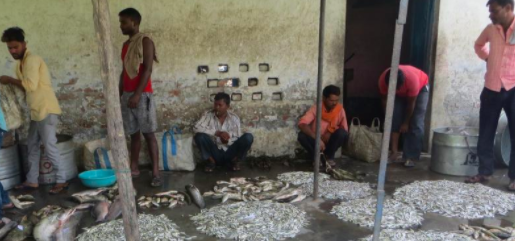-
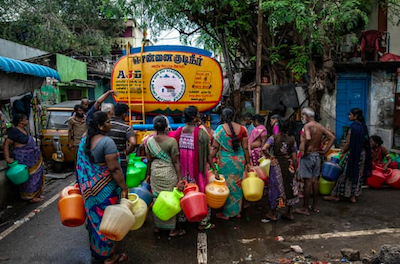
University of Chicago Comes up With Novel Solutions for India's Age-Old Problems
NEWS18 | Jan 21, 2020
Tata Centre for Development at the University of Chicago has undertaken several research projects to portray how technology can be used to deal with India’s growing problems of pollution, labour productivity, education and other development-related issues.
-

To clean rivers, Indian must learn to reduce waste
Hindustan Times | New Delhi | Nov 4, 2019
India is one of the most vulnerable countries in terms of climate change, water, air and environmental pollution. The Tata Centre for Development (TCD) is harnessing the rigour of the University of Chicago’s Economics department to address some of India’s most pressing policy and development issues, combining multi-disciplinary research with strategic outreach and partnership to translate evidence into impact.
-

Cleaning India’s rivers: Time to raise the game with better water quality data and transparency measures
Financial Express | Priyank Hirani & Vikas Dimble | May 16, 2019
Improving river water quality has been a political priority over the years. But what cannot be adequately measured, cannot be improved.
-

A boatman, a scientist, a journalist: Three kids grew up by the Ganga and witnessed its slow death in their lifetime. Will they see it get a new life?
Gaon Connection | Nidhi Jamwa | New Delhi | May 27, 2019
As a young girl in the history-rich city of Varanasi, Kavita Shah used to reach the banks of the Ganga early morning and leap into its current, gliding in from its icy Himalayan origins.
-

Getting detailed with river water
Governance Now | Praggya Guptaa | New Delhi | May 3, 2019
Long-time residents of Varanasi say that among their fondest memories is of sitting on the ghats and watching dolphins frolick in the Ganga. These days though, no one sees them. “Some 25-30 years ago, dolphins were a common sight here at Assi ghat,” says Ram Kishan Nishad, a boatman. “Now, they have moved towards Chunar (upstream from Varanasi).”
-
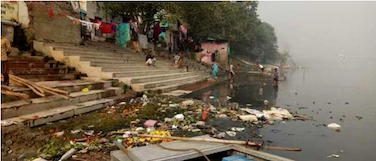
Researchers Sail In Yamuna To Get Data On Pollution To Help Government Plan Cleanup Strategies For The River
NDTV | Barkha Mathur | New Delhi | Apr 26, 2019
While the government has been spending crores on cleaning the Yamuna river since past three decades under programmes like Yamuna Action Plan and Sewerage Master Plan 2031, water quality in the river, however, is still on the deteriorating path.
-

How dirty is Yamuna? A boat ride tells you
Times of India | Jasjeev Gandhiok | New Delhi | Apr 2, 2019
A boat ride down the Yamuna in the capital provides visual proof of how polluted the river is. But a new technology quantifies this presence of pollutants. The “Water-to-Cloud” tech uses sensors attached to the boat. When the system traverses the riverine course, the sensors send real-time readings to a hand-held device that allows researchers to analyse the spots along the river where the pollution is highest. For over two decades now, the concentration of pollutants in the Yamuna has been steadily rising, with no decrease in the industrial and sewage discharge into the river despite preventive measures taken various agencies. The new technology developed by the University of Chicago’s Tata Centre for Development can pin-point where the pollutants are entering the river.
-

What Can We Do to Clean India's Polluted Rivers?
NEWS18 | Priyank Hirani & Vikas Dimble | Sept 1, 2019
Indian rivers are in a state of toxicity. Take the example of the most sacred and revered, Ganga, most of whose water is unfit for drinking and bathing. Out of the 86 monitoring stations on Ganga, only seven sites have been found to be fit for drinking after disinfection process, while only 18 spots have been found to be fit for bathing. That’s the data from the Central Pollution Control Board (CPCB).
-

Water pollution is killing millions of Indians. Here's how technology and reliable data can change that
World Economic Forum | Priyank Hirani & Vikas Dimble | Oct 4, 2019
Humans have wrestled with water quality for thousands of years, as far back as the 4th and 5th centuries BC when Hippocrates, the father of modern medicine, linked impure water to disease and invented one of the earliest water filters. Today, the challenge is sizeable, creating existential threats to biodiversity and multiple human communities, as well as threatening economic progress and sustainability of human lives.
-
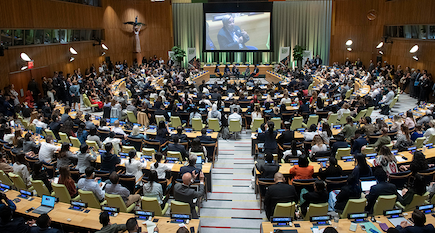
At the United Nations, youth leaders call for true climate action
Science News for Students | GRETA MORAN | New York City | Sep 24, 2019
Last weekend, young people around the world rallied behind a common cause: urgent climate action. On Friday, students from some 150 countries skipped school to participate in the largest climate protests ever. These were the high point in a year of youth climate strikes that began with just one teen, Greta Thunberg, now 16, taking action. She sat outside the Swedish parliament again and again (before later speaking to delegates of a United Nations Climate Change Conference in Poland). On Saturday, she and more than 700 other young climate leaders took action once more — here, at the first United Nations Youth Climate Summit.
-

Yamuna cleaner this April than it was previous year, finds study
Times of India City | Ritam Halder | New Delhi | May 23, 2019
Yamuna water quality has improved substantially in the past one year, a recent report submitted to the NGT-appointed monitoring committee has revealed.
According to the waterquality analysis, submitted by the researchers of the University of Chicago as part of the Water to Cloud project, the amount of oxygen dissolved in water which should be a minimum 4, was almost 0 in April 2018. “The river was also observed to be sludgy and stinky. However, there seems to be quite an improvement in dissolved oxygen (DO) levels in April, 2019. While there are some pockets along the river where the DO levels are 1 mg/l or near 0, in many other pockets the DO levels were seen to be above 5 mg/l. A possible reason is the better flow observed in the river,” the report, a copy of which is with TOI, stated.
-
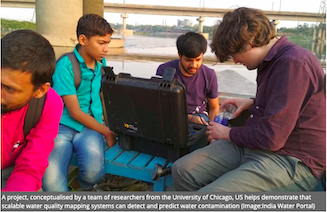
Mapping pollution hotspots in Yamuna
India Water Portal | Amrita Bhaduri | New Delhi | May 01, 2019
The Yamuna was considered a nurturing and life-enhancing goddess in the past. Legend has it that bathing in the sacred waters of the Yamuna, the sister of Yama, the god of death, frees one from the ordeal of death. The 1376-km river is a tributary of the Ganga and originates in the Yamunotri glacier in the lower Himalayas. It passes through several states in north India including Uttarakhand, Haryana, Uttar Pradesh and Delhi where the river was once its lifeline. Its water has been diverted about 200 km upstream of Delhi at Hathnikund barrage through the western and eastern Yamuna canals for irrigated agriculture while wastes from 50,000 industries and sewage from eight million people tear the natural system asunder.
-

Scientists sail on boat to map Yamuna pollution hotspots
The Asian Age | Sanjay Kaw | New Delhi | Apr 3, 2019
New Delhi
Scientists sailed down a section of the Yamuna last week on a boat equipped with cutting edge sensors to map pollution hotspots and monitor water quality in real time instead of relying on time-intensive and expensive laboratory measurements. At Nigambodh Ghat, scientists were able to find the exact locations where effluents entered the Yamuna along with a map which indicated the level of acidity, dissolved oxygen and organic matter among other factors that make the river water unfit for not just humans but also aquatic life.
